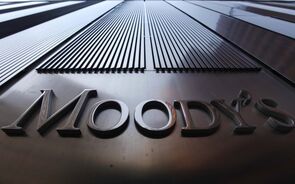Distribution tops and Insiders making exits
1 Mensagem
|Página 1 de 1
Distribution tops and Insiders making exits
lower six months later...
I think some people have not paid enough attention to the difference between a cyclical (shorter-term) move and a secular (longer-term) move. If we are in a secular bear market, as I believe, there will be rallies like the one that we have had, but they will just be rallies. To repeat what I have said in the past, long-term investors should generally not expect to just sit on stocks and get bailed out for their patience. The long term may wind up being six to nine months, though if we could get stocks cheaply enough (which is not the case today), a rally of some longer duration might be possible. In any case, without further ado, here are Susan's thoughts, with an important message for both bulls and bears:
"During the 1982-2000 secular bull market, there were two declines of 20% or more. The first, in 1987, lasted two months in the DJIA, four months in the S&P 500. The second, in 1990, lasted three months from July to October. By contrast, the average duration of bear markets within the 1966-1982 secular downtrend was 16-17 months. Given that secular trends usually last about 16-17 years, we are going to have to adjust to an environment very different from what we got used to in the 1980s and 1990s. Instant gratification is likely to be rare, for either bulls or bears. When we get into periods like the last few months, trying to make money on the long side is like pulling teeth. It is equally frustrating for the bears, as the market conforms to expectation by failing to go up, but disappoints by failing to go down.
"When 20%-plus declines are over within a matter of a few months, bulls who failed to sidestep the decline are usually able to recoup their losses within several months after the market turns up again (unless they were hit with margin calls). In a secular bear market, the attempt to 'get even' with the market after suffering substantial losses is usually very difficult, if not impossible. This is the psychological hook that keeps traders trying to recapture the glories of the period when making money was so much easier. Because it is more difficult, the victory is sweeter on those rare occasions when it does occur, and this, too, is part of what keeps people in stocks long after the point when they should have gotten out of harm's way. Random, inconsistent reinforcement tends to be more effective in motivating repeat behavior than reliable, consistent reinforcement. This is why it often takes so long in a bear market to get to capitulation.
"We are likely to be in this secular bear market for many more years to come. In our opinion, the market is currently in the area of a distribution top, and the next significant move in stock prices is likely to be on the downside. We expect to see little or no net upside progress beyond the closing highs recorded in June and July before a decline begins. At the present time, we believe the pending decline will likely be 20% to 30% or more across the board, but if the market's technical condition begins to improve more rapidly than we currently expect, we will alter our downside expectations accordingly."
Wheezing to the upside
It appears to me that we are continuing to make a top in the market. The rally basically ran out of gas in late June. I know the Dow ($INDU) and Nasdaq ($COMPX) have reached minor new highs, and likewise a couple of subindices, but the progress looks very labored to me. It's fairly predictable that folks would try to party during the thick of the no-news period. Also, the bulls have enjoyed the wind at their back, with a rallying dollar and stock market feeding on each other to the upside.
But I think that sometime in the not-too-distant future, the dollar is going to come under pressure once again. I don't expect the stock market to see any meaningful gains from these levels, and I believe that the next big move will be on the downside. In my opinion, the chances of a crash grow with each passing day, though I will note that crashes or massive market dislocations are very low-probability events. But for those of you who weren't around in 1987, the backdrop was similar, in terms of bonds, the dollar and the stock market's flight of fantasy. Denial back then was nowhere near as egregious as it is now. The fear then was runaway inflation, which obviously isn't today's concern. And now, the fallout from the bubble looms far more dangerous than what was haunting the market in 1987.
By: Comstock/Fleckenstein
I think some people have not paid enough attention to the difference between a cyclical (shorter-term) move and a secular (longer-term) move. If we are in a secular bear market, as I believe, there will be rallies like the one that we have had, but they will just be rallies. To repeat what I have said in the past, long-term investors should generally not expect to just sit on stocks and get bailed out for their patience. The long term may wind up being six to nine months, though if we could get stocks cheaply enough (which is not the case today), a rally of some longer duration might be possible. In any case, without further ado, here are Susan's thoughts, with an important message for both bulls and bears:
"During the 1982-2000 secular bull market, there were two declines of 20% or more. The first, in 1987, lasted two months in the DJIA, four months in the S&P 500. The second, in 1990, lasted three months from July to October. By contrast, the average duration of bear markets within the 1966-1982 secular downtrend was 16-17 months. Given that secular trends usually last about 16-17 years, we are going to have to adjust to an environment very different from what we got used to in the 1980s and 1990s. Instant gratification is likely to be rare, for either bulls or bears. When we get into periods like the last few months, trying to make money on the long side is like pulling teeth. It is equally frustrating for the bears, as the market conforms to expectation by failing to go up, but disappoints by failing to go down.
"When 20%-plus declines are over within a matter of a few months, bulls who failed to sidestep the decline are usually able to recoup their losses within several months after the market turns up again (unless they were hit with margin calls). In a secular bear market, the attempt to 'get even' with the market after suffering substantial losses is usually very difficult, if not impossible. This is the psychological hook that keeps traders trying to recapture the glories of the period when making money was so much easier. Because it is more difficult, the victory is sweeter on those rare occasions when it does occur, and this, too, is part of what keeps people in stocks long after the point when they should have gotten out of harm's way. Random, inconsistent reinforcement tends to be more effective in motivating repeat behavior than reliable, consistent reinforcement. This is why it often takes so long in a bear market to get to capitulation.
"We are likely to be in this secular bear market for many more years to come. In our opinion, the market is currently in the area of a distribution top, and the next significant move in stock prices is likely to be on the downside. We expect to see little or no net upside progress beyond the closing highs recorded in June and July before a decline begins. At the present time, we believe the pending decline will likely be 20% to 30% or more across the board, but if the market's technical condition begins to improve more rapidly than we currently expect, we will alter our downside expectations accordingly."
Wheezing to the upside
It appears to me that we are continuing to make a top in the market. The rally basically ran out of gas in late June. I know the Dow ($INDU) and Nasdaq ($COMPX) have reached minor new highs, and likewise a couple of subindices, but the progress looks very labored to me. It's fairly predictable that folks would try to party during the thick of the no-news period. Also, the bulls have enjoyed the wind at their back, with a rallying dollar and stock market feeding on each other to the upside.
But I think that sometime in the not-too-distant future, the dollar is going to come under pressure once again. I don't expect the stock market to see any meaningful gains from these levels, and I believe that the next big move will be on the downside. In my opinion, the chances of a crash grow with each passing day, though I will note that crashes or massive market dislocations are very low-probability events. But for those of you who weren't around in 1987, the backdrop was similar, in terms of bonds, the dollar and the stock market's flight of fantasy. Denial back then was nowhere near as egregious as it is now. The fear then was runaway inflation, which obviously isn't today's concern. And now, the fallout from the bubble looms far more dangerous than what was haunting the market in 1987.
By: Comstock/Fleckenstein
Surfer
1 Mensagem
|Página 1 de 1
Quem está ligado:
Utilizadores a ver este Fórum: Bing [Bot], cali010201, Dragon56, Google [Bot], m-m, navaldoc e 214 visitantes


